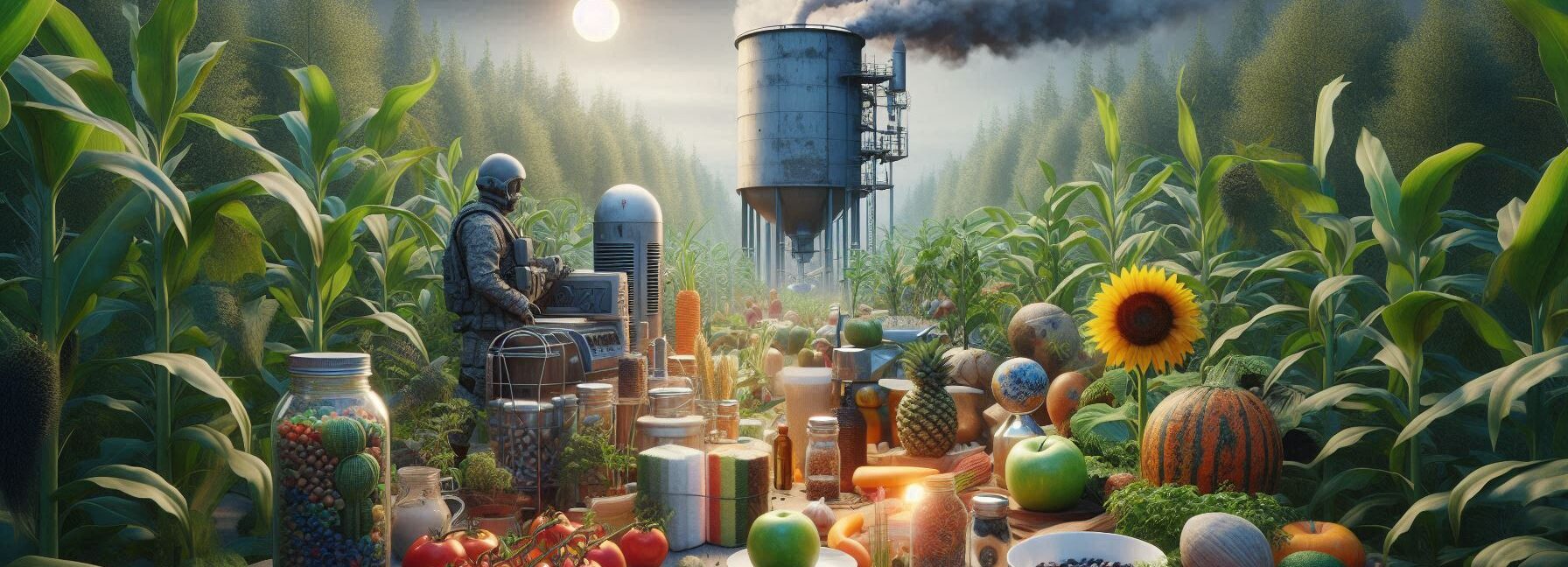Please Note: This post may contain affiliate links. If you click one of them, we may receive a commission at no extra cost to you. As an Amazon Associate, I earn from qualifying purchases.
Last Updated on November 1, 2025 by Kevin Collier

Top Takeaways and Key Concepts
- Start small by planting easy seeds like beans or carrots in prepared soil.
- Identify your soil type to choose crops suited for sandy, clay, or loamy ground.
- Space plants properly and use companion planting to improve growth and deter pests.
- Use natural pest controls like garlic spray, diatomaceous earth, or beneficial insects.
- Harvest carefully with clean tools to enjoy fresh, home-grown produce safely.
Imagine this: the world has turned into a pile of rubble, and you’re standing there with just your trusty spade. You borrowed it from your neighbor without asking, but hey, desperate times, right? You’ve got this strong wish to grow food.
Sure, we’d all miss our smartphones for snapping food pics on Instagram. But guess what? Growing food without all the tech can be a real adventure. It might even be fun! Sure, you’ll get dirt under your nails, and there might be a rogue rabbit eyeing your garden like it’s a buffet. But that’s part of the charm.
Start small. Grab some seeds. Maybe beans or carrots. Seed packets are like little treasure maps! Just find a patch of soil, dig a hole with that spade, and drop the seeds in. Cover them up and give them a sprinkle of water. Like planting magic.
Keep an eye on your garden. It’ll need watering and maybe some weeding. Weeds are like little ninjas trying to steal the spotlight from your veggies. Pull them out when you see them. It's a workout too.
It is great to see those seeds grow. Little green shoots growing up are like little wins. You will be proud every time you see them. And what about when it's time to harvest? Oh man, nothing beats eating food you grew yourself.
There will be problems, like keeping an eye on those cunning rabbits. Imagine it as a game. You can scare them away with shiny things or erect little fences.
This is about having fun while being in touch with nature. It's messy and unpredictable, but that's what makes it fun. Touch the dirt and watch the plants grow; you could find something amazing. You can satisfy your heart and your stomach by cultivating food, even without technology. So, let's welcome the dirt and the experience together. You can do this!
Understanding Your Environment: The Ground Beneath Your Feet
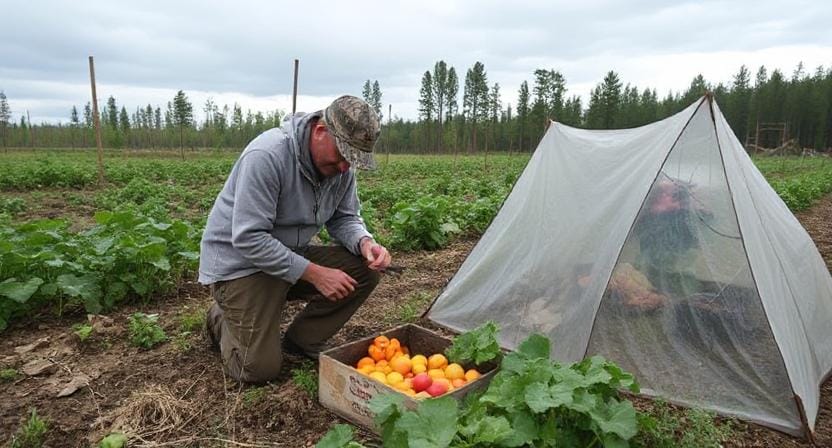
*** Shop for Survival Gear - Tools - Kits ***
Survival Gear - Bags and Backpacks - Knives - Boots/Footwear - Communication
Outdoor Cooking - Gloves - Hydration - Dry Boxes - Water Filtration Systems
Tents - Sleeping Bags - First Aid Kits - Multi-Tools - Flashlights - Fire Starters
Navigation - Survival Food - Night Vision - Headlamps - Stun Guns - Binoculars
Before diving headfirst into the dirt, let’s take a moment to appreciate what’s actually going on beneath us. Soil isn’t just dirt; it's like a buffet for plants!
You have sandy soil that drains water faster than I can run from a bear, clay soil that holds onto moisture like my grandma clings to her favorite quilt, and loamy soil which is basically the Goldilocks of soils—not too dry, not too wet.
By the way, understanding your soil type will help you choose what to plant. If you’ve got sandy soil, root vegetables like carrots or potatoes might thrive while clay soil is better suited for beans and peas.
So, get down there and dig around! Yes, I mean literally dig; don’t just poke at it with your finger like you're testing pudding.
Seed Selection: What’s on the Menu?
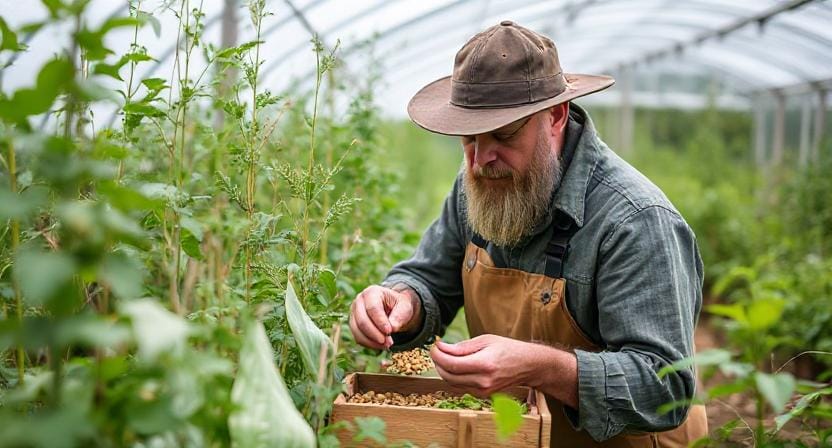
Now that you’ve gotten acquainted with your local dirt situation, let’s talk seeds. Choosing the right seeds is crucial because let’s face it—you don’t want to end up planting something that tastes worse than old shoe leather.
Look for heirloom varieties if possible; they tend to be hardier and can withstand less-than-ideal conditions—like those mornings when you wake up feeling more zombie than human.
Interestingly enough, beans are an excellent choice since they’re easy to grow and can fix nitrogen back into the soil—basically making them nature's little helpers!
You could also consider planting grains like corn or wheat if you're feeling ambitious. Just imagine harvesting enough corn to make some killer cornbread after surviving off wild berries for weeks!
Planting Techniques: Get Dirty!
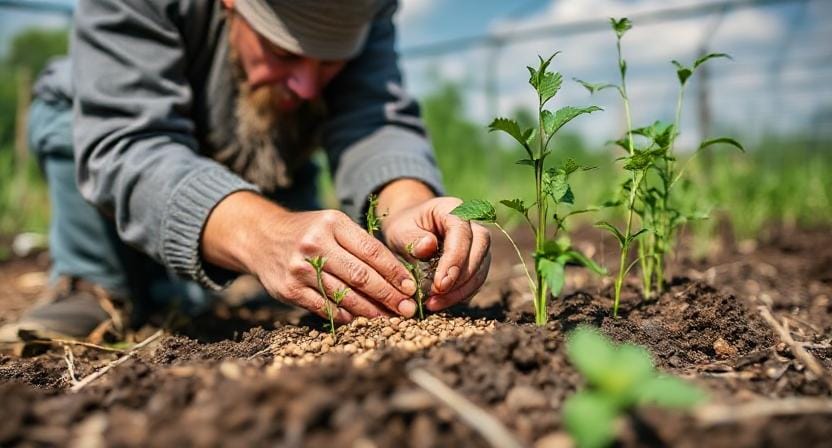
It's time to sow now that your seeds are ready. But wait, before you start throwing seeds around like confetti at a procession, remember that the distance between them is important. Putting too many plants together is like having all your family over for Thanksgiving—things get messy! Follow the instructions on the seed packet carefully since each plant needs space to breathe and flourish.
Let's see… “Companion planting” is a common approach in which some plants help each other develop while keeping pests away. For instance, planting marigolds next to tomatoes keeps bugs away and draws in helpful pollinators like bees. In our post-apocalyptic garden adventure, those little buzzers are our buddies!
Don't forget to water, by the way! Watering deeply but not very often makes roots grow deep into the ground, which is how I like my snacks: deep-fried but not very often (just kidding!).
Pest Control: The Battle Against Unwanted Guests
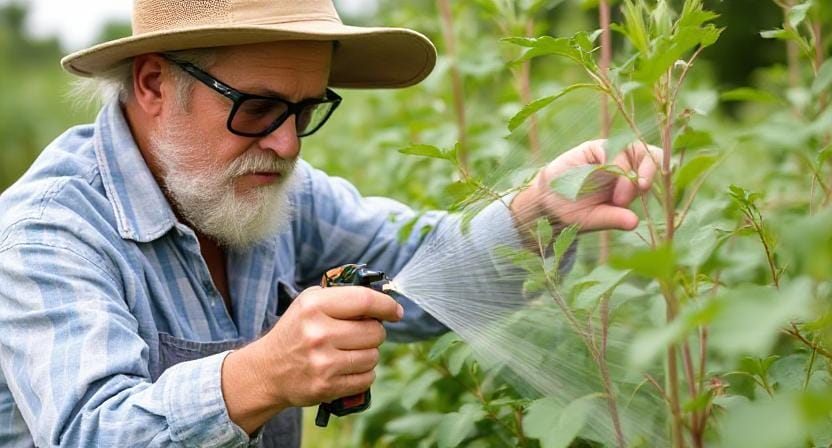
When your garden starts to grow (or at least appear a little less forlorn), you might get some uninvited guests who believe your hard work is a buffet. Let me tell you, even the most patient gardener will have to work hard to get rid of pests.
If you want to keep these pests away without using high-tech tools or chemical sprays (which would be hard anyway), try using natural deterrents like diatomaceous earth or garlic spray. Both of these sound fancy, but they're easy to create at home!
To be honest? When you beat those annoying aphids with nothing but crushed garlic cloves and water, you'll feel quite proud.
And while we're on the subject of wise moves… Adding helpful bugs like ladybugs or praying mantises can give pest control efforts the extra strength they need. Who would have thought that gardening could become an action movie with little insect heroes?
Harvesting Time: Enjoying Your Bounty
After all that hard work digging in dirt—and possibly arguing with rabbits over who owns what—it’s finally time for harvest day! This moment feels akin to winning an Olympic medal except instead of being celebrated by millions worldwide; it's just you holding up a handful of squishy tomatoes wondering why one has mysteriously split open.
Harvesting should be done carefully so as not damage remaining crops still maturing nearby (the last thing we need now is drama). Use clean tools whenever possible because no one wants bacteria joining their fresh produce party!
All things considered? There’s nothing quite as satisfying as eating something you've grown yourself—even if it doesn’t look perfect on Instagram!
Frequently Asked Questions
What crops are easiest to start with in a low-tech garden?
Beans, carrots, and other basic root crops perform well because they need minimal tools and adapt easily to varied soils.
Why does soil type matter when planting without technology?
Different soils hold water and nutrients differently, so choosing crops suited to sandy, clay, or loamy soil improves survival rates.
How does companion planting help without modern equipment?
Companion plant pairings boost growth, support pollinators, and naturally reduce pest pressure without chemical sprays.
What are natural pest control options if supplies are limited?
Garlic spray, diatomaceous earth, and beneficial insects like ladybugs offer effective non-synthetic pest resistance.
How do you avoid overcrowding crops?
Space seeds according to plant needs so each root system has room to develop, preventing nutrient competition and disease.
How do you harvest safely without modern tools?
Use clean knives or shears and remove produce gently so nearby plants remain intact for continued growth.
Can you grow enough to sustain yourself long-term?
Yes, with crop rotation, careful planting, and seasonal planning, low-tech gardens can produce reliable recurring food sources.
Suggested Resources:
Heirloom Seeds – https://www.heirloomseeds.com
Organic Gardening Tips – https://www.organicgardening.com
Companion Planting Guide – https://www.gardeningknowhow.com/companion-planting-guide

Kevin Collier is a seasoned survivalist and expert in prepping and homesteading, contributing to WiseSurvive.com. With a deep-rooted passion for self-sufficiency and outdoor survival skills, Kevin shares practical advice, strategies, and resources to help individuals prepare for any challenge. His informative articles cover a range of topics, from essential survival techniques to sustainable living practices, empowering readers to thrive in any situation. Whether you're a novice or a seasoned prepper, Kevin's insights will inspire you to take charge of your readiness and build resilience for the future.


